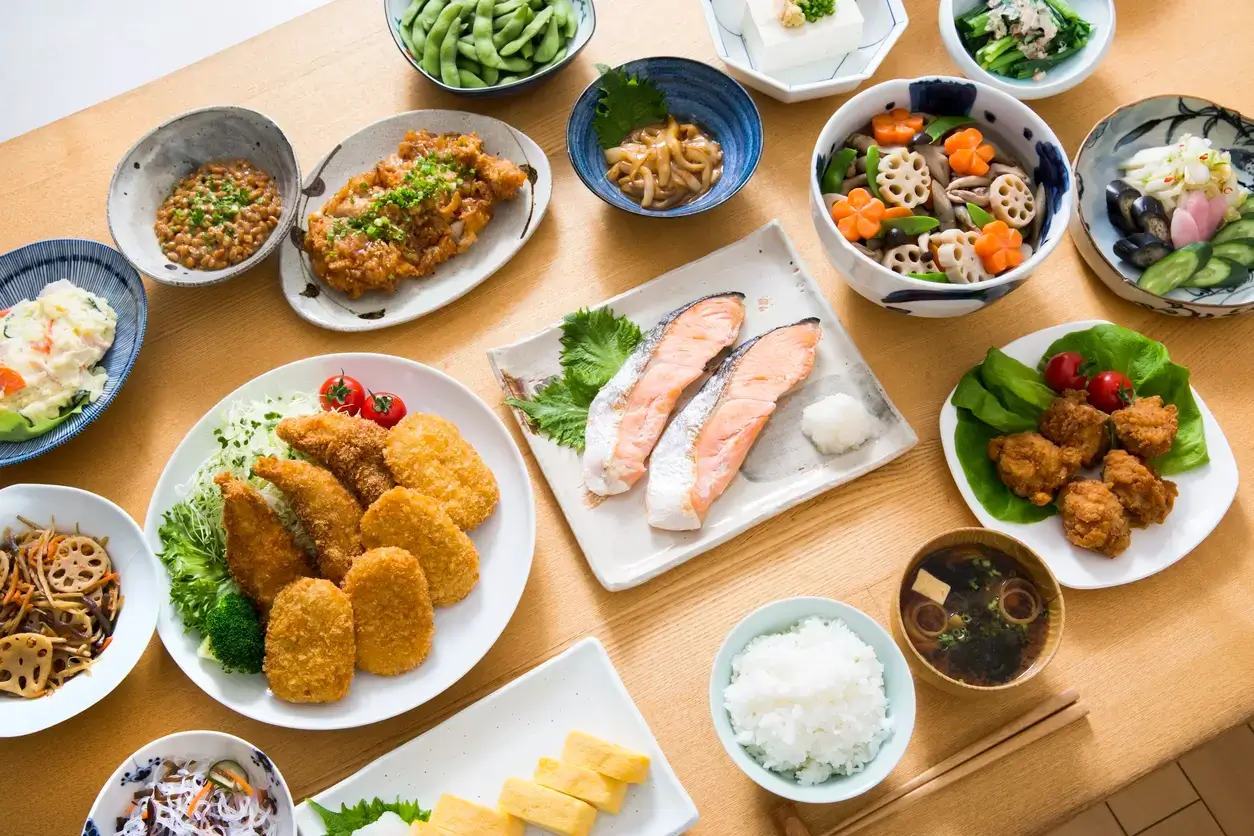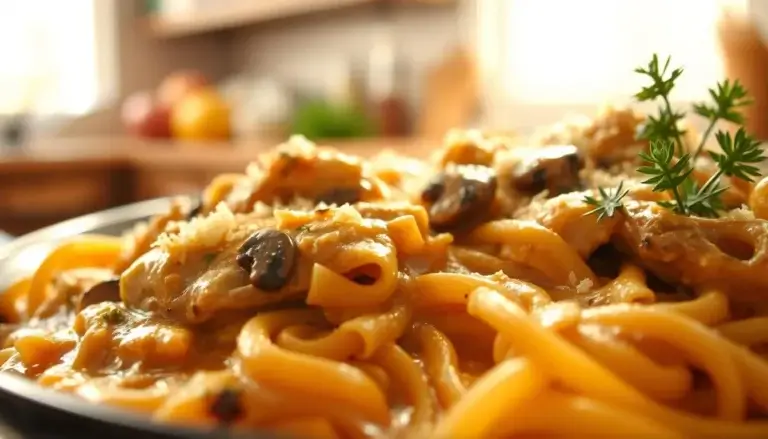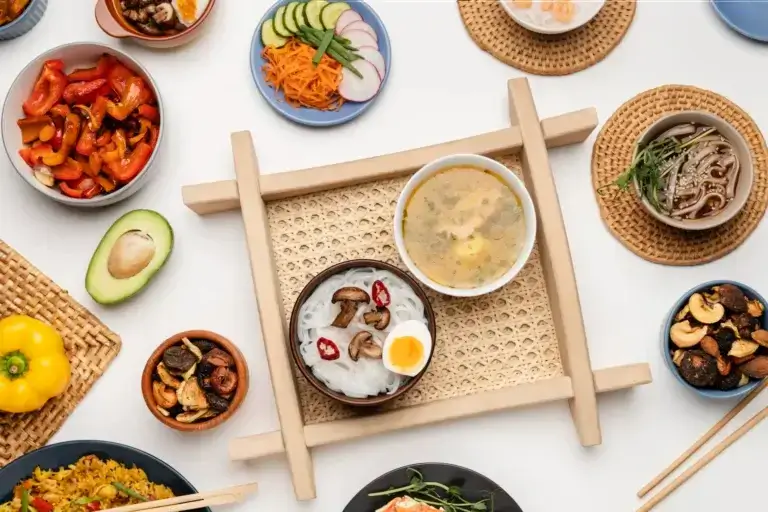Beginner’s Guide to Easy Japanese Recipes
Table of Contents
Imagine you want something new for dinner but don’t want to spend hours cooking. Japanese recipes are surprisingly easy to make at home. They don’t need fancy kitchens or hard-to-find ingredients. This article is for you, whether you’re new to teriyaki or just want to try something different.
japanese recipes
Many people think Japanese food is hard to make, but it’s not. Classics like ramen and stir-fries use common ingredients. This guide will help you build a Japanese pantry, learn quick techniques, and avoid common mistakes. You’ll see how to make delicious Japanese meals in no time.
Key Takeaways
- Japanese recipes often use ingredients found in American supermarkets.
- Easy Japanese meals can be ready in 30 minutes or less.
- Mistakes in Japanese cooking are fixable with simple tips.
- Japanese dinner staples like rice and dashi form the base of most dishes.
- Traditional flavors adapt well to American preferences.
Getting Started with Japanese Cooking: What You Need to Know
Exploring japanese recipes is easy, even without a fancy kitchen. First, learn the basics that make easy japanese dishes simple. Here are three key things to get you started.
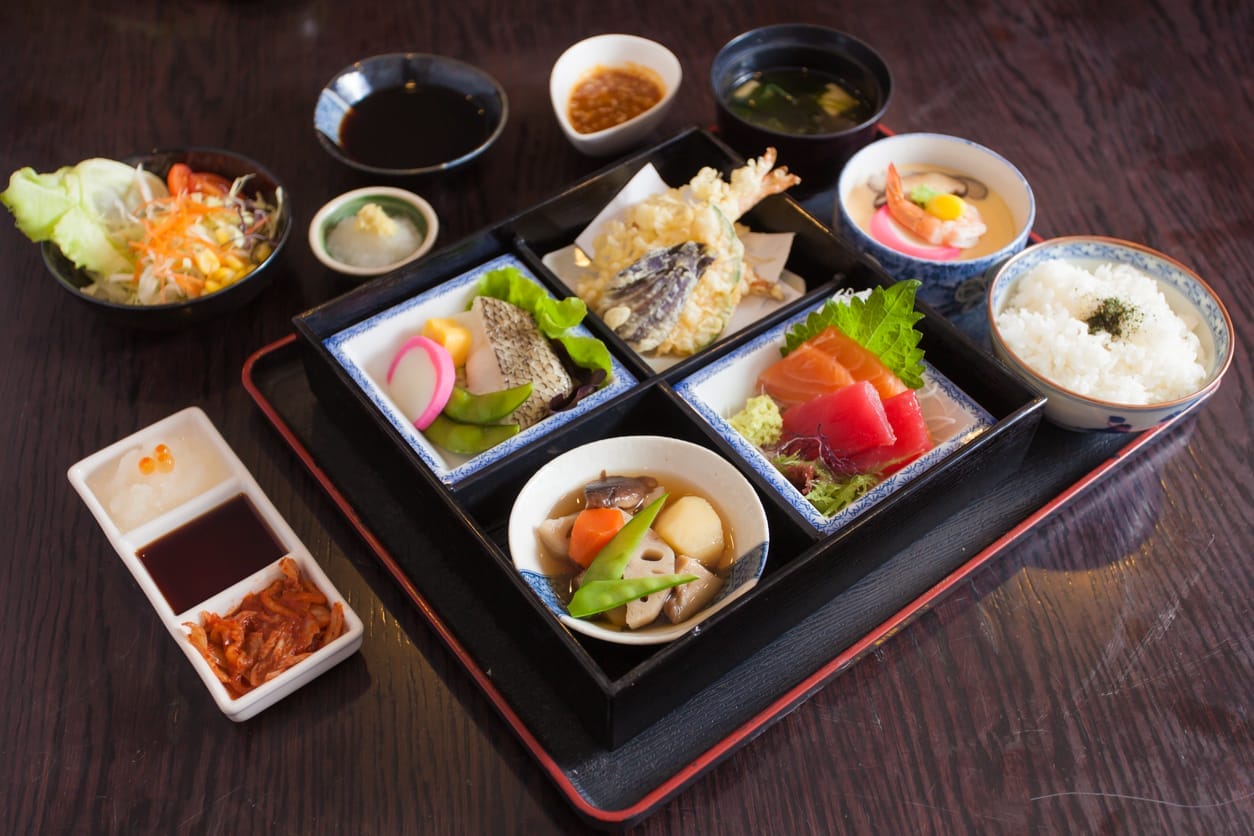
Japanese pantry essentials
Understanding Japanese Flavor Profiles
Japanese cooking focuses on five main tastes: sweet, salty, sour, bitter, and umami. Mirin adds sweetness, soy sauce brings saltiness, and rice vinegar adds tang. Bitter melon adds bitterness, and dashi brings umami. These flavors work together to make every dish special.
The Five Essential Japanese Cooking Techniques
- Nimono: Simmer ingredients in seasoned broth for tender results.
- Yakimono: Grill or broil meats and veggies for smoky depth.
- Itamemono: Stir-fry quickly in a hot pan for crisp textures.
- Mushimono: Steam foods like bok choy or fish for light meals.
- Agemono: Coat and deep-fry for crispy treats like tempura.
Setting Up Your Japanese Pantry
Start with versatile staples. Here’s a basic guide:
| Staple | Role | Where to Find |
| Soy sauce | Salts and seasons most dishes | Supermarkets or Asian grocery stores |
| Miso paste | Base for soups and marinades | Refrigerated section |
| Rice vinegar | Essential for dressings and marinades | Condiment aisle |
Start small and add more as you try new easy japanese dishes. Use quality ingredients like real dashi granules or nori sheets. They make dishes taste better without being hard to make.
Essential Japanese Ingredients You Can Find in American Supermarkets
Getting ready for japanese recipes doesn’t mean you need to go to a special store. Most important ingredients are in the regular aisles of Walmart, Target, or Kroger. Here’s what to pick up and where to find it.

japanese dishes to make ingredients
- Soy Sauce: Look for Kikkoman or Yamasa in the Asian aisle. Use regular soy sauce for most japanese dishes to make. Choose “light” (milder) for salads and “dark” (stronger) for marinating.
- Mirin: Find it near rice vinegar. If you can’t find mirin, mix white wine and sugar in equal parts. Brands like hakubafu work well.
- Rice Vinegar: In the vinegar section. Marukan is a top choice—use it to brighten sushi rice or salad dressings.
- Miso Paste: Check refrigerated or pantry shelves. Hikari or (Hakutōya) deliver authentic umami. Keep it sealed in the fridge after opening.
- Panko: Baking aisle or frozen foods. Use Japanese-style breadcrumbs from Nishiki for crispy coatings.
- Nori: Snack or seaweed section. Sushi Nori sheets from Yamamotoyama are a staple for rolls.
Prioritize soy sauce, rice vinegar, and miso—they’re the base of 80% of home japanese recipes. Stock these first if you’re watching your budget. Always check expiration dates and store in cool, dry spots. Now you’re ready to shop like a pro—no specialty store required!
Basic Japanese Recipes Anyone Can Master
Learning to make japanese dishes to make is easy. Start with simple recipes that use common ingredients. These meals are quick to make, often faster than ordering takeout. You don’t need to be a pro in the kitchen—just be curious and ready to try new things.
“The best flavors come from patience and practice. Start small and build your way up.”
One-Pot Japanese Dinner Solutions
These dishes are great because they’re easy to clean up:
- Oyakodon: Cook chicken, eggs, and soy sauce together. Serve over steamed rice for a filling meal.
- Japanese Curry: Mix store-bought curry roux with veggies and meat. It’s a comforting one-pot meal.
- Shabu-Shabu: Thinly slice beef and serve with dipping sauces and noodles. It’s perfect for sharing.
Quick 30-Minute Japanese Meals
Even when you’re short on time, you can still enjoy easy japanese meals. Here are some fast options:
- Teriyaki Salmon: Marinate salmon in soy sauce, mirin, and sugar. Then, pan-fry it.
- Miso Soup: Mix miso paste into hot dashi with tofu and seaweed. It’s ready in 5 minutes.
- Vegetable Yakisoba: Stir-fry noodles with cabbage, carrots, and a sweet soy glaze. It’s a colorful dish.
Make Ahead Japanese Dinner Options
Save time by prepping these meals ahead:
- Mapo Tofu: Marinate tofu in chili bean paste overnight. It gets even tastier.
- Onigiri: Shape sushi rice with fillings like pickled plum or seasoned salmon. They’re easy to make.
- Miso Glazed Tofu: Marinate tofu in miso, soy sauce, and rice wine hours before. It’s packed with umami.
Authentic Japanese Dishes That Are Surprisingly Easy to Make
Many authentic Japanese dishes are easy to make. You don’t need years of practice. Smart shortcuts and pantry staples help you make iconic flavors at home.
Traditional vs. Simplified Approaches
Find a balance between tradition and ease with these tips:
- Dashi: Use instant dashi granules instead of simmering kelp and bonito flakes for hours. Quality brands like Aoyagi or Mizkan work wonders.
- Pickling: Quick-pickle veggies in rice vinegar and sugar mixtures for 30 minutes instead of weeks-long fermentation.
- Marinating: Prep sauces ahead of time—mix soy sauce, mirin, and sake for teriyaki glaze and store it in the fridge.
Regional Japanese Specialties Made Simple
Explore japanese dishes to make with these regional favorites:
| Dish | Region | Key Ingredients | Pro Tip |
| Okinawan Champuru | Okinawa | Tofu, goya (bitter melon), Spam | Sauté ingredients in sesame oil for depth. |
| Hokkaido Butter Corn Ramen | Hokkaido | Butter, corn, soy sauce | Simmer corn kernels in broth for 10 minutes. |
| Osaka Okonomiyaki | Osaka | Cabbage, flour, eggs | Pre-mix batter in a bowl before adding to the pan. |
These recipes show that authentic Japanese dishes are accessible. Start small, use shortcuts, and let your creativity flow!
Mastering the Art of Japanese Rice: The Foundation of Your Meal
Perfect Japanese rice is the backbone of any Japanese dinner. It’s not just a side—it’s the foundation that balances flavors and textures. Whether you’re making classic dishes or a family-friendly meal, the quality of your rice makes all the difference.
Choose between Calrose or Kokuho Rose short-grain rice or imported brands like
Tamanishiki for an authentic taste. Look for these in Asian supermarkets or major retailers like Walmart or H-E-B.
Follow these steps for consistent results:
- Rinse: Swirl rice in cold water until water runs clear to remove excess starch.
- Soak: Let rice rest in water 30 minutes for even absorption.
- Cook: Use 1:1.1 water ratio. Options:
Try these methods:
- Rice cooker: Soaked rice + water, press start.
- Instant Pot: 2 cups rice + 2.5 cups water, cook on rice setting.
- Stovetop: Bring to boil, then simmer covered on low heat for 12 minutes.
Common issues? Fix them fast:
| Problem | Solution |
| Rice too dry | Add 1-2 tbsp water during cooking |
| Clumpy grains | Ensure thorough rinsing and proper soaking time |
| Burnt bottom | Use a heavy pot and avoid lifting lid during cooking |
Flavor rice with ingredients like shiitake, carrots, or soy sauce to create takikomi gohan. Leftovers can become sushi rice or onigiri. Serve rice in a warmed bowl to keep it moist—this humble grain elevates every japanese dinner into a cohesive, satisfying meal.
Easy Japanese Dinner Ideas for Weeknight Cooking
Make weeknights exciting with easy japanese meals. These recipes mix tradition with ease. They let you enjoy japanese dinner favorites without losing family time.
Family-Friendly Japanese Recipes
- Hamburg steak: Seasoned beef pattiewith savory sauce, perfect for pairing with rice and veggies.
- Crispy chicken katsu: Breaded and pan-fried chicken cutlets—great with tartare sauce and shredded cabbage.
- Omurice: A kids’ favorite—egg-wrapped fried rice and gravy, simplified for quick prep.
Japanese Fusion Dishes for American Palates
Try mixing familiar tastes with easy japanese dishes like:
- Teriyaki burgers: Beef patties glazed with homemade teriyaki sauce.
- Miso-glazed salmon: Quick sear with miso, sugar, and sake for a rich umami hit.
- Japanese pasta: Aglio e olio with nori, soy sauce, and scallions for a twist on comfort food.
Japanese-Inspired Meal Prep Ideas
Make weeknights easier by prepping ahead:
- Marinated proteins (chicken, or tofu) for stir-fries
- Batch-made dashi or soy-ginger sauce for instant flavor boosts
- Pre-cut veggies for quick stir-fries or salads
“Start small—swap one night a week to build confidence.”
Pair these ideas with rice or noodles for a complete japanese dinner. Small changes make tradition easy for weeknights.
Simple Japanese Side Dishes to Complete Your Dinner
Japanese meals are known for their colorful, flavorful okazu (side dishes). These authentic Japanese dishes add balance to your meal without taking up too much time. Here are five easy options to enhance your rice bowls:
- Sunomono: Quick-pickled cucumber in rice vinegar, suga, and soy sauce. Slice cucumbers thinly, toss with salt to soften, then mix with tangy dressing. A crisp, refreshing contrast to rich mains.
- Kinpira Gobo: Sautéed burdock root and carrots with soy sauce and mirin. Substitute burdock with julienned carrots if unavailable—sweet, savory, and hearty.
- Goma-Ae: Spinach sautéed with sesame oil, then tossed in a nutty sesame dressing. Use spinach or kale for a protein-packed side.
- Quick Tsukemono: Marinate shredded daikon or radish in rice vinegar and sugar. Ready in 30 minutes—spicy and crunchy.
- Miso-Dressed Eggplant: Grilled eggplant drizzled with miso, soy sauce, and sesame oil. Char eggplant under the broiler for smoky depth.
| Side | Prep Time | Storage Tips | Pro Tip |
| Sunomono | 15 mins | Keep chilled up to 3 days | Add thinly sliced apples for sweetness |
| Kinpira Gobo | 20 mins | Reheat in microwave | Toast sesame seeds first for deeper flavor |
| Goma-Ae | 10 mins | Prep spinach ahead; dress before serving | Blend tahini for creamier texture |
Pair 2-3 sides with rice and a protein for a balanced meal. Many japanese dishes to make here can double as leftovers—goma-ae as salad toppings, kinpira gobo as grain bowl mix-ins. Experiment with store-bought vs. homemade versions to save time. Your table is your guide—mix textures and flavors for an authentic spread!
Common Mistakes to Avoid When Cooking Japanese Recipes
Mastering japanese recipes means knowing what to avoid. Even small mistakes can change the taste and texture of easy japanese dishes. Learn how to make substitutions and fix common problems to keep your meals true to authentic japanese dishes.
Ingredient Substitutions That Actually Work
When you can’t find specific ingredients, use these swaps thoughtfully:
- Soy sauce: Mix tamari + sugar for reduced salt or gluten-free options.
- Mirin: Combine equal parts sugar, water, and white wine. Adds sweetness but lacks authentic depth.
- Wasabi: Freshly grated is best, but store-bought paste works in a pinch—avoid green food coloring imitations.
Troubleshooting Your Japanese Cooking
| Problem | Solution |
| Soy sauce-based sauce too salty | Add rice vinegar or sugar to balance. Simmer to reduce intensity. |
| Rice grains sticking to the pot | Wash rice until water runs clear. Use a rice cooker or a heavy pot with a tight lid. |
| Fish turning rubbery | Marinate no longerthan 30 minutes. Over-marination breaks down proteins. |
How to Present Your Japanese Dishes Like a Pro
Make your japanese dinner a feast for the eyes with smart presentation tricks. The Japanese art of moritsuke turns simple dishes into memorable meals. Even home cooks can achieve this by focusing on balance and simplicity.
- Color Contrast: Pair vibrant ingredients like red pickled ginger against plain white rice bowls.
- Portion Control: Use small plates to mirror authentic japanese dishes portions, making meals feel special.
- Garnish Strategically: Sprinkle sesame seeds or chives as finishing touches—no complicated tools required.
| Traditional Item | Everyday Substitute |
| lacquered bento box | white porcelain plate |
| earthenware bowls | simple ceramic dishes |
| sake cups | clear glass tumblers |
A well-stocked pantry can double as your presentation toolkit. Line up dishes at an angle, leave negative space on plates, and vary heights with small bowls stacked beside main plates. Seasonal touches like a sprig of fresh herbs or edible flowers add authenticity without extra effort.
“The arrangement should look like it grew there naturally.”
This Japanese culinary philosophy means less is often more. Whether servingauthentic japanese dishesor fusion creations, focus on harmony between food and setting. Add a woven mat under plates for texture, or use seasonal motifs on placemats to enhance the mood. Your table becomes a story—no special equipment needed!
Conclusion: Your Journey into Japanese Home Cooking Starts Now
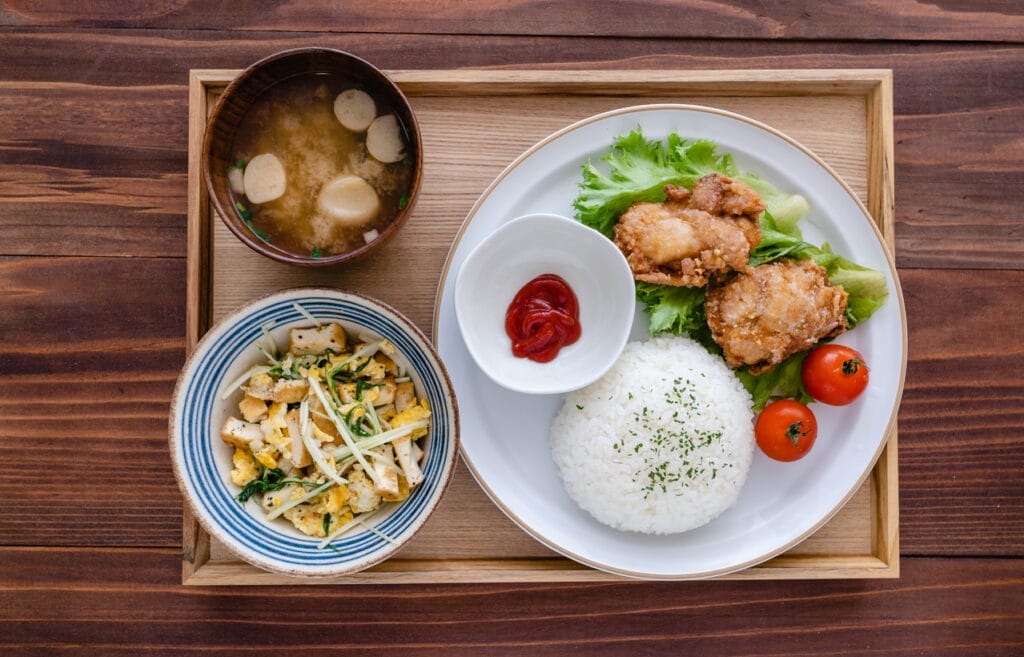
Exploring japanese recipes doesn’t have to be scary. Start with simple dishes like tamagoyaki omelet or miso soup. They need just a few ingredients and don’t take long to make.
These dishes help you learn the basics and let you play with flavors from your kitchen. You can find great guides like “Japanese Home Cooking” by Yukari . Or check out YouTube channels like Nadeshico Kitchen for easy-to-follow videos.
These resources make learning easy, breaking down steps for beginners. Even simple dishes like gyoza or vegetable tempura show how japanese recipes can be made with ingredients found in U.S. stores.
Remember, Japanese cooking is all about balance and enjoying the process. Don’t worry too much about making it perfect. Use shortcuts like store-bought broth and focus on making meals that bring people together.
Try making easy japanese meals once a week to get better. Sharing dishes like teriyaki bowls or sushi rolls with family and friends makes meals special. Every attempt you make is a step towards mastering Japanese cooking.
Don’t be too hard on yourself. Every mistake is a chance to learn. As you keep trying, you’ll see how easy and rewarding it is to cook Japanese dishes. Your kitchen is where your journey starts, one delicious bite at a time.
FAQ
What are some easy Japanese meals I can prepare at home?
Start with dishes like teriyaki chicken, miso soup, or Japanese curry. They need just a few ingredients and can be ready in under 30 minutes.
Are there authentic Japanese dishes that are quick to make?
Yes! Try making yakisoba (stir-fried noodles), donburi (rice bowls), and onigiri (rice balls). They’re both authentic and quick to prepare.
What basic techniques do I need to know for Japanese cooking?
Learn about nimono (simmering), yakimono (grilling), and agemono (frying). These techniques will help you make many easy Japanese dishes.
Where can I find Japanese ingredients in American supermarkets?
Look in the international aisle of stores like Walmart, Kroger, or Whole Foods. You’ll find soy sauce, miso paste, rice vinegar, and panko breadcrumbs there.
How can I enhance my Japanese dinner with side dishes?
Prepare simple sides like sunomono (vinegared salad), goma-ae (spinach with sesame dressing), or quick tsukemono (pickles). They’ll add flavor to your main dish.
What common mistakes should I avoid when cooking Japanese recipes?
Avoid skipping steps, misbalancing flavors, and using the wrong heat levels. Focus on these to make sure your dishes are delicious.
How can I make sure my Japanese rice turns out perfectly?
Wash your rice well, soak it for 30 minutes, and use the right water ratio. This will give you the perfect texture for your meals.
Do you have suggestions for Japanese fusion dishes that American families might enjoy?
Try teriyaki burgers, miso-glazed salmon, or Japanese-style pasta dishes. They mix traditional Japanese flavors with American favorites.

